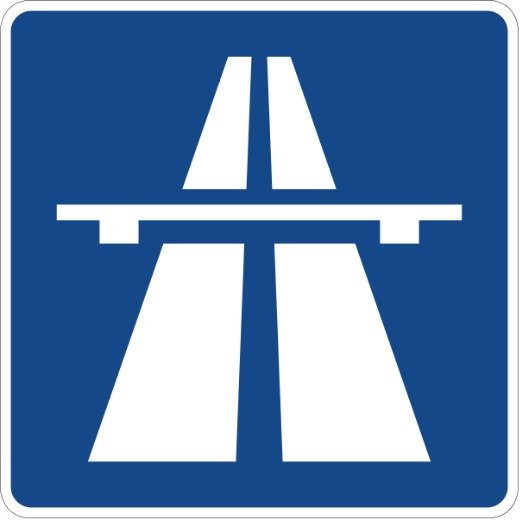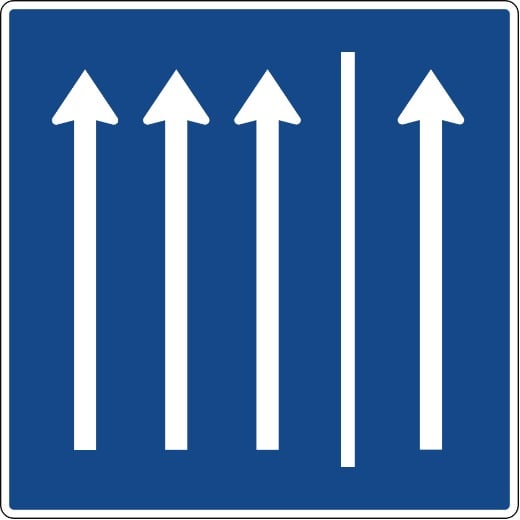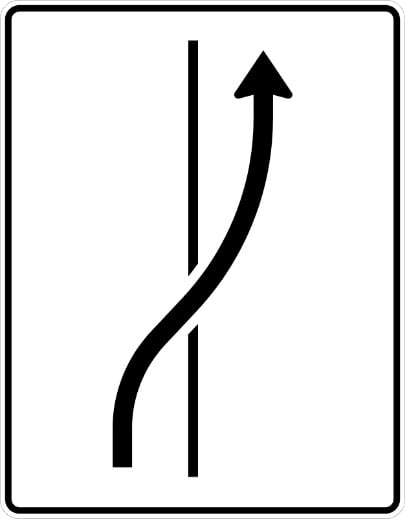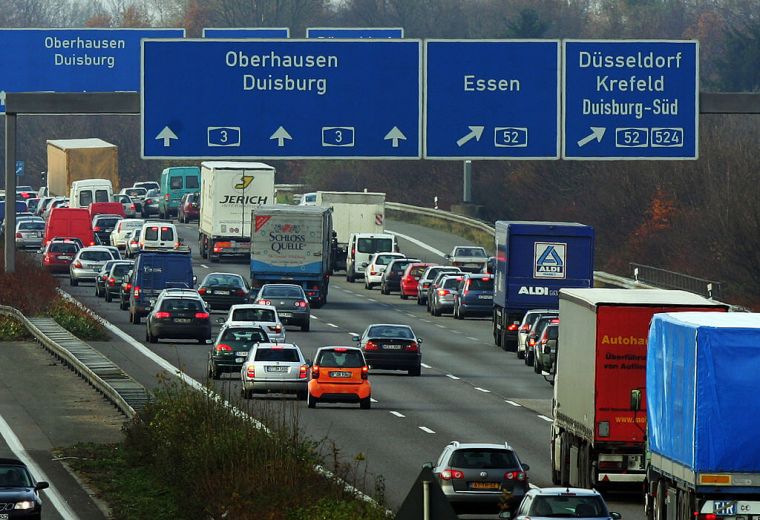Although you may be familiar with the German’s famous motorway with ‘no speed limits’ – the autobahn – there are several key pieces of information that all drivers need to know.
It is important to understand how the German motorway system works, along with roads in rural areas, towns, and cities.
Although the surrounding countries may have more extensive speed limits, breaking the rules German roads can come with some severe punishments – with fines starting from going just 1 km/h over the speed limit in some places.
Speed limits in Germany
Contrary to popular belief, there are speed limits that apply to the vast majority of roads in Germany.
Like the rest of mainland Europe, the Germans use km/h rather than mph that we use here in the UK.
For cars and motorbikes, the speed limit in towns and cities is 50 km/h (~31 mph) – unless otherwise stated – and 100 km/h (~62 mph) on non-urban/open roads that are not the motorway/autobahn.
Some smaller roads within urban areas have signs showing speed limits of 30 km/h (18 mph).
If you are towing a trailer or caravan, then the speed limit is reduced to 80 km/h (~50 mph) on open roads, and variable up to 100 km/h on the motorway.
What is the speed limit on German motorways?
On the autobahn, there are areas where there are no speed limits, and they are marked with circular white signs with four black diagonal lines. Some of the motorway has a 130 km/h (~80 mph) advisory speed limit for all vehicles under 3.5 tonnes.
Around 30% of the autobahn’s 8000-plus mile roads come with a permanent or variable speed limit, with a further 10% using traffic control systems to regulate traffic.
Unlike many countries, Germany also has minimum speed limits. On a six lane road – the minimum speed for the fast lane is 110 km/h, middle lane is 90 km/h, and slow lane is 60 km/h. If a car cannot maintain these speeds on flat ground, then they are not allowed on motorways in Germany.
Germany speed limits
| Type of road | Speed limit |
|---|---|
| Autobahn (white sign) | No speed limit/variable |
| Autobahn (red sign) | 130 km/h (recommended) |
| Non-urban area | 100 km/h |
| Urban area | 50 km/h |
| Some city roads | 30 km/h |
- Driving abroad? Be prepared to take out European Breakdown Cover
- Driving in Europe checklist
- Driving in the EU after Brexit – all you need to know
The autobahn: a short guide
If you know that your journey in Germany is going to take you on the autobahn – then these tips should help you have a safe drive.
You will know that you will be entering the autobahn when you see the blue and white signs below.

From this point on, keep an eye out for the two speed limit signs and what the smart motorways are telling you to do.
When on the autobahn, it’s important to stay in the right lane unless overtaking and on any roads without speed limits, it’s likely that someone is travelling faster than you, so you should move out of the left lane as soon as it’s safe to do so.
You shouldn’t use the hard shoulder unless you’re given permission by these signs:


On your German road trip, you will need to be extra vigilant when on the autobahn. When leaving it, you can drive faster than vehicles to your left after the exit lanes begin – something that can cause confusion for drivers from other countries.
Unlike in the UK, where we make way wherever we are for emergency vehicles – in Germany drivers have to create a ‘Rettungsgasse’ or emergency vehicle lane. If there are two lanes in each direction, you should move your car to the far right or far left depending on your position to create a middle lane for emergency vehicles. Whether there is an emergency or slow traffic – never get out of your vehicle.
If there are more than two lanes, drivers in the right-side lanes should move further right, while drivers in the third or fourth left lane should stay on the far left.
There are also a few more rule to keep in mind; use your indicators, it’s compulsory to keep a warning triangle and first aid kit in your car at all times; never reverse or make any U-turns; never stop or park along the Autobahn; never drive in the left lane to prevent vehicles from passing or tailgate and flash drivers to encourage them into right lanes.

German speeding fines and penalties
Although many people looking forward to driving in Germany may be thinking that they can put their foot down – there are serious consequences for breaking speed limits.
As stated in the StVO (Germany’s driving laws and regulations), speeding offences can lead to fines, points, and driving bans. Should a driver reach 8 points they will have to be banned from driving for a longer time or potentially for good.
The punishment can depend on whether a person is driving in or out of an urban area.
| Over the speed limit by XX km/h | No-urban area fine and points | Urban area fine and points | Driving ban (non urban offence) | Driving ban (urban offence) |
|---|---|---|---|---|
| 1-10 | €20 & no points | €30 | - | - |
| 11-15 | €40 & no points | €50 | - | - |
| 16-20 | €60 & no points | €70 | - | - |
| 21-25 | €115 & 1 point | €100 | - | 1 month |
| 26-30 | €180 & 1 point | €150 | 1 month | 1 month |
| 31-40 | €260 & 1 point | €200 | 1 month | 1 month |
| 41-50 | €400 & 2 points | €320 | 1 month | 1 month |
| 51-60 | €560 & 2 points | €480 | 1 month | 2 months |
| 61-70 | €700 & 2 points | €600 | 2 months | 3 months |
| 70+ | €800 & 2 points | €700 | 3 months | 3 months |
- German emissions sticker – what is it and where you need it
- Driving on the German Autobahn – your complete guide
- German road signs – do you know them?
Tips for driving in Germany
Now that you are prepared for the speed limits, get yourself ready for your next visit to Germany.
Before you head off, the RAC’s European Breakdown Cover provides a wide range of benefits should you breakdown in Germany to ensure you stay safe. You can compare our European breakdown cover with providers such as the AA and Greenflag. To supplement this, RAC also offers travel insurance.
Once you know the rules of the road in Germany, it is important to bring the right documents so that you can legally drive in the country.
You’ll need a full UK driving licence, your passport, car insurance information, and your V5 registration document.
If you are driving from the UK to Germany in your own car, then you will need to have a UK sticker on the back of the vehicle. After September 28th 2021 you can no longer use GB stickers.
If you do get into any emergency when on the roads in Germany, call 112 for help. It is possible to speak to someone in English on this number.
To prepare you for this, make sure you have a warning triangle (compulsory for all four-wheeled vehicles), headlamp beam deflectors (if you are driving a right-hand drive car without built-in deflectors), first-aid kit, and a reflective jacket.
Also, in 2010 the German goverrnment made it a legal requirement for all vehicles to be fitted with winter or all-season tyres for winter conditions.
Known as the ‘Winterisation’ of the German roads, this applies to all vehicles – whether you are renting or bringing your own. If you are looking at having a temporary vehicle during your time in Germany, make sure you have this as an extra as it can run up in cost once you arrive to pick up your vehicle.
Whether you are driving from the UK or are picking up a vehicle in Germany, the RAC Route Planner can help you prepare. Just remember, just like France, if you are using a GPS device in your car – you will need to turn off the function that picks up where speed cameras are.
Now that you are ready to get behind the wheel, we have shortlisted the best road trips in Germany – make sure to check them out on your next visit. If you have flown into Germany, take a look at these guides that looks at what you should do when hiring a car abroad, and what you should do once you are about to start your journey.
For more information on what to expect when you are in the country, this guide can give you everything you need to know about driving in Germany. Have a great trip!
- Speed cameras – how they work
- Speeding fines – how much you have to pay
- How to save fuel – the ultimate guide

European Breakdown Cover
Get covered when driving in Europe for just £4.17 a day*.
*Price is based on European comprehensive breakdown cover for a 14 day trip, in a vehicle up to 1 year old, travelling in zone 1.

German Autobahn FAQ
- What is the fastest speed ever recorded on the autobahn?
The fastest speed ever officially recorded on the German autobahn is 432.7 km/h (268 mph). It was set by German racing driver Rudolf Caracciola in 1938 in a Mercedes-Benz W125 Rekordwagen.
- Why does Germany have no speed limit?
The German government passed the Road Traffic Act in 1934, where speeds in urban areas were limited to 60 km/h (37 mph). No speed limit was stated for autobahns and this hasn’t changed much. In recent years, the German government has recommended a maximum speed of 130 km/h (80 mph), however, there are no restrictions in the de-restricted sections of the autobahns.
- What is a German motorway called?
A German motorway with certain areas where there are no speed limits is called an Autobahn.
- How fast can you go on the autobahn?
The German government recommends a maximum speed of 130 km/h (80 mph) on its motorways, however, there are no restrictions in the de-restricted sections of the autobahns - meaning drivers can reach very high speeds.










